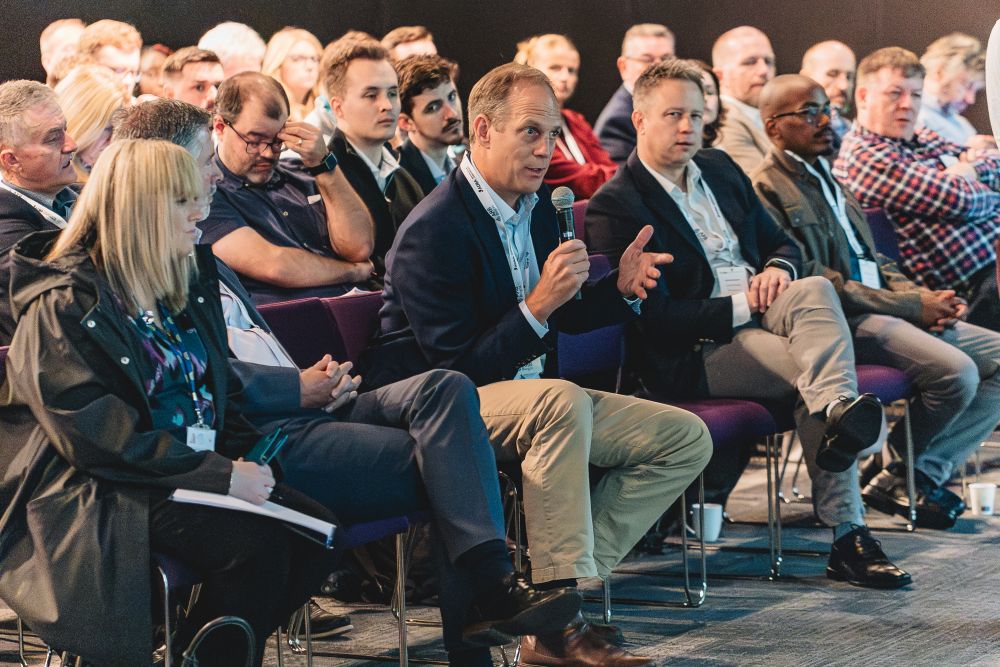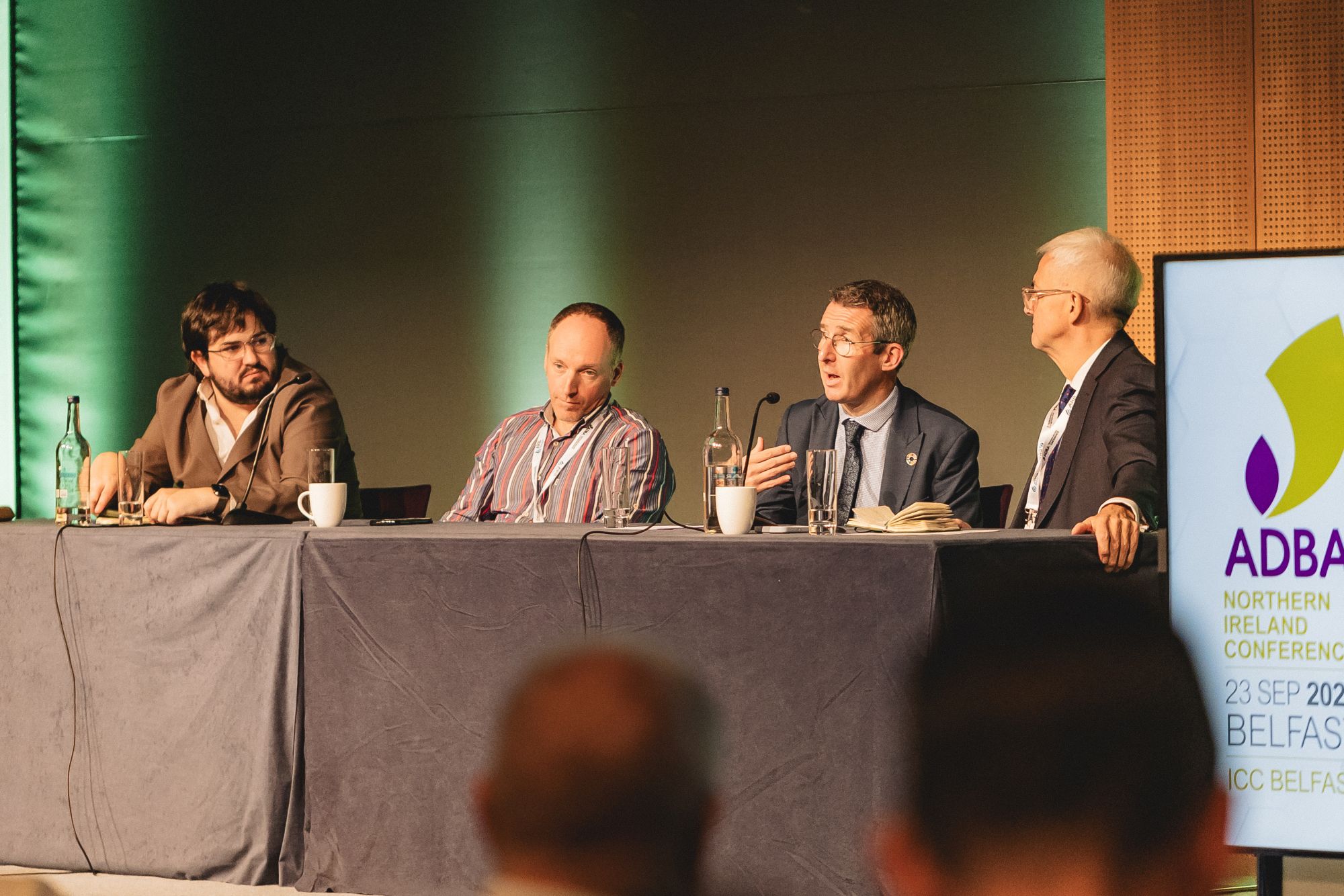The Green Gas Task Force (GGTF) of which ADBA is a member has just published…
Northern Ireland – a land of opportunity for AD: reflections on another fruitful ADBA conference
On 23 September in Belfast, ADBA held its latest Northern Ireland (NI) conference.
Following an uneventful year in the province, ADBA was keen to host a conference that provided good indicators of a way forward.
Although there’s been little development in Northern Ireland’s biogas sector for the best part of a decade due to the lack of any new incentive mechanism since the suspension of the NI-RHI, this doesn’t mean there has been none. So ADBA assembled the positive signals that are there.

The Department for the Economy has expressed an interest in biomethane as a part of the province’s future – not just for energy, but also as an incentive to manage the nutrient risks that come from the significant livestock herd. Agriculture might be the major source of income in Northern Ireland, but it is also a major source of the phosphorus that pollutes its waterways and the reason why, with only 3% of the UK population, it generates 12% of the UK’s ammonia emissions.
All of this adds up to a major opportunity for biomethane production in Northern Ireland with an estimated potential of 6TWh of biomethane. This is almost the current injection capacity of the UK, and it’s more than the 2030 target for the Republic of Ireland (5.7TWh). These feedstocks include a lot of manure and chicken litter, as these are major byproducts of the dairy and poultry industries. These feedstocks are also major sources of phosphorous and ammonia and pollution risks. Having these feedstocks redirected to AD ensures better management of the materials which makes it far easier to control and monitor the outputs. This diversion not only puts the manure and litter into the controlled environment of AD but also generates positive benefits from energy production and the potential of carbon capture.
In the run-up to the conference, the Republic of Ireland (RoI) released the draft of the Renewable Heat Obligation (RHO), broadly modelled on the Renewable Transport Fuels Obligation. The new RoI RHO could offer a ready market for NI injection points, particularly if, as with the all-Ireland electricity market, these are considered as “domestic” in the Republic. The RoI target of 3% biomethane grid content by 2028 could be effectively supported by NI production, helping both economies if key regulatory levers can be pulled.
A few hours before we hosted an extremely successful second ever operators’ dinner prior to the conference, the Northern Ireland Executive announced that the NI-RHI was finally being closed, including extended termination payments to participants. This was important news as it now opens the way for a follow-on scheme instead of continuing stasis.

On the day, there was remarkable enthusiasm and interest in all the sessions. We addressed the policy and market landscape described above, and were treated to a very positive and open Q&A session from Andrew Muir MLA, Minister for Departement of Agriculture, the Environment and Rural Affairs (DAERA). Delivering the keynote address for the second year running, the Minister was able to point to some positive outputs and opportunities coming from DAERA-sponsored research into AD and nutrient management initiatives.
Other sessions dealt with nutrients, biorefineries, how to maximise operational efficiencies, and how to line up all the key factors to enable financing of AD – even in a difficult environment.
As we have done over the last few major meetings and conference, we took feedback from the audience on where we are as a sector and how ADBA can support AD in the area. The session looking at how to invigorate AD growth offered some great insights from Firmus not only on what the problems are, but also on the size of the opportunity and what the Green Gas Task Force in Great Britain – conveniently headed by a Northern Irishman – finds helpful in making the case.

The session on nutrient management provided some practical insights into the demonstration programme from B&H estates and how AD fits into the solution set, as well as policy perspectives and scientific analysis from AFBI.
It is clear that with the closure of the NI-RHI and the delay in the announcement of the GGSS follow-on consultation, there is an opportunity for the UK to line up the policy mechanisms. If we can bring all the key actors together, there is a chance that the AD sector in NI can move forward and start to make a major contribution to Northern Ireland’s growth, energy security, nutrient risk, and preservation of its agricultural potential. Even with all of this uncertainty, the province offers a clear opportunity for the AD sector, and one that ADBA will be spending some time to really assess in the coming months.
In conclusion, Northern Ireland requires decisive action rather than prolonged debate to ensure that measures complement each other rather than compete. Biogas should be promoted not only as an energy solution but also as a nutrient management solution. To achieve this, Northern Ireland needs to secure a social licence through public engagement and educate policymakers and politicians by showing them operational AD plants.
Additionally, showcasing visible success stories is crucial to building confidence and support for biogas initiatives. A partnership between governmental departments is vital, but even more important is collaboration across broader stakeholders, including the food and drink sector, farmers, investors, and the public. This comprehensive approach will help foster a supportive environment for the growth and success of biogas in Northern Ireland.
To advance its biogas sector, it is essential to harmonise policy and regulatory decisions.
The opportunity is clear: sandwiched between GB and RoI, with free access to both markets, NI could use biomethane and AD as a major spur to environmentally sustainable growth.
These conversations go to prove that in NI, as in GB, there is no net zero without AD.
